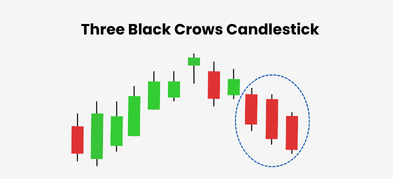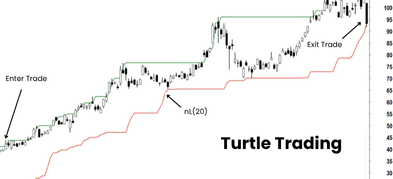Important Information
This website is managed by Ultima Markets’ international entities, and it’s important to emphasise that they are not subject to regulation by the FCA in the UK. Therefore, you must understand that you will not have the FCA’s protection when investing through this website – for example:
- You will not be guaranteed Negative Balance Protection
- You will not be protected by FCA’s leverage restrictions
- You will not have the right to settle disputes via the Financial Ombudsman Service (FOS)
- You will not be protected by Financial Services Compensation Scheme (FSCS)
- Any monies deposited will not be afforded the protection required under the FCA Client Assets Sourcebook. The level of protection for your funds will be determined by the regulations of the relevant local regulator.
Note: Ultima Markets is currently developing a dedicated website for UK clients and expects to onboard UK clients under FCA regulations in 2026.
If you would like to proceed and visit this website, you acknowledge and confirm the following:
- 1.The website is owned by Ultima Markets’ international entities and not by Ultima Markets UK Ltd, which is regulated by the FCA.
- 2.Ultima Markets Limited, or any of the Ultima Markets international entities, are neither based in the UK nor licensed by the FCA.
- 3.You are accessing the website at your own initiative and have not been solicited by Ultima Markets Limited in any way.
- 4.Investing through this website does not grant you the protections provided by the FCA.
- 5.Should you choose to invest through this website or with any of the international Ultima Markets entities, you will be subject to the rules and regulations of the relevant international regulatory authorities, not the FCA.
Ultima Markets wants to make it clear that we are duly licensed and authorised to offer the services and financial derivative products listed on our website. Individuals accessing this website and registering a trading account do so entirely of their own volition and without prior solicitation.
By confirming your decision to proceed with entering the website, you hereby affirm that this decision was solely initiated by you, and no solicitation has been made by any Ultima Markets entity.
I confirm my intention to proceed and enter this websiteBuy to Open vs Buy to Close
Buy to Open is used to initiate a new long position in an options contract either a call or a put. It means the trader is buying an option to start a position. Buy to Close is used to exit an existing short options position that was previously sold. It means the trader is buying back the option to close the short trade.
Key Differences:
| Feature | Buy to Open | Buy to Close |
| Action | Enter a long options position | Exit a short options position |
| Position Type | Long call or put | Close short call or put |
| Purpose | Start a new trade | Cover or exit a short trade |
| Market Role | Buyer (option holder) | Buyer (to offset short) |
| Example Use | Bullish or bearish directional plays | Lock in profits from premium selling |
The main difference is this:
- Buy to Open = Starting a new position (you pay premium).
- Buy to Close = Exiting a short position (you may pay or profit depending on price movement).

What Is Buy to Open?
Buy to Open is an order type used when a trader initiates a new long position in an options contract. It allows you to open a position by buying a call or a put option.
- Call Option: You’re bullish and expect the asset to rise.
- Put Option: You’re bearish and expect the asset to fall.
When you place a Buy to Open order, you’re becoming the holder of the option and paying a premium to do so.
How Does Buy to Open Work?
Buy to Open works by placing an order to purchase an options contract either a call or a put to initiate a new long position. When you Buy to Open a call option, you’re betting the underlying asset will go up; with a put option, you’re expecting it to go down. You pay a premium upfront, and your potential profit depends on how much the asset moves in your favor before expiration. The position is later closed with a Sell to Close order.
Let’s say Apple (AAPL) is trading at $190, and you expect the price to go up. You can Buy to Open a $200 call option for $3. That means you pay $300 (since each contract controls 100 shares) to participate in the upside.
If the stock rises above $203 before expiration, you could sell the option for a profit or exercise it.
Pros and Cons of Buying to Open
Before using a Buy to Open order, it’s important to weigh the advantages and risks. This strategy gives traders the right to profit from price movements in either direction, depending on whether they buy a call or a put. However, buying options also comes with time sensitivity and premium costs that can affect profitability.
| Pros | Cons |
| Profit from bullish (calls) or bearish (puts) moves | Options lose value due to time decay (theta) |
| Defined maximum risk (premium paid) | Needs correct timing and direction |
| Lower capital requirement than buying shares | High implied volatility can inflate premium |
Example of Buy to Open
Imagine you’re bullish on Tesla (TSLA), which is trading at $250. You Buy to Open a $260 call expiring in two weeks for $5. If TSLA jumps to $270, your option could be worth $10, doubling your investment.
If TSLA stays below $260, your risk is limited to the $500 premium paid.

What Is Buy to Close?
Buy to Close is used to exit an existing short option position that is, a position you opened using Sell to Open. When you Buy to Close, you’re buying back the same option to offset your earlier sale.
This is typically used by traders who sell options to collect premiums and want to lock in profits or prevent further losses.
How Does Buy to Close Work?
Buy to Close is used to exit a short options position that was originally opened by selling the option (Sell to Open). When you Buy to Close, you’re purchasing the same contract back to close the trade and remove your obligation. Traders often use this order to lock in profits, limit losses, or avoid being assigned the underlying asset before expiration.
Let’s say you Sold to Open a $100 put on Microsoft (MSFT) for $4. If the price of the option drops to $1, you can Buy to Close that position and secure a $3 profit.
Pros and Cons of Buying to Close
Using a Buy to Close order is a key risk management tool when trading short options. It allows traders to exit positions they initially sold, either to secure profits or prevent larger losses. While it offers flexibility and control, timing the exit is crucial, as buying back the option too early or too late can impact overall returns.
| Pros | Cons |
| Locks in profits on short options | May limit further gains if closed too early |
| Closes risky open short positions | Could lead to losses if premium increased |
| Helps avoid early assignment | Still requires monitoring of price swings |
Example of Buy to Close
You Sell to Open a Netflix (NFLX) $400 call for $6. After earnings, the stock drops and the option price falls to $2. You Buy to Close at $2, keeping a $4 profit per share ($400 total per contract).
Impact on Open Interest
Understanding the impact of Buy to Open vs Buy to Close on open interest is essential for analyzing options market activity.
When you Buy to Open, you typically increase open interest, as you’re adding a new contract to the market. In contrast, when you Buy to Close, you’re reducing open interest by closing out an existing short position. Tracking changes in open interest helps traders gauge liquidity, identify active strike prices, and confirm market sentiment.
- When you Buy to Open, you often increase open interest especially if the seller is also opening a new position.
- When you Buy to Close, you reduce open interest, because you’re closing a position that was already open.
Risk of Assignment When Selling Options
One of the key risks in options trading is assignment, especially when you’ve sold options using a Sell to Open order. If the option moves in-the-money before expiration, you may be assigned early, meaning you’re obligated to buy or sell the underlying asset. To avoid this, traders often use a Buy to Close order to exit the short position before assignment occurs. This is particularly important around earnings announcements or ex-dividend dates, when early assignment risk increases.
Understanding this risk helps you manage positions more effectively and avoid unexpected losses.
- Call Option Assignment: You may be forced to sell shares.
- Put Option Assignment: You may be forced to buy shares.
Conclusion
Understanding the difference between Buy to Open vs Buy to Close is critical for trading options effectively. Whether you’re entering a position to profit from a directional move or exiting a short trade to lock in gains or reduce risk, using the right order ensures precision and prevents costly mistakes.
Platforms like Ultima Markets help you visualize these orders clearly, reducing errors and improving execution especially in fast-moving markets.
Disclaimer: This content is provided for informational purposes only and does not constitute, and should not be construed as, financial, investment, or other professional advice. No statement or opinion contained here in should be considered a recommendation by Ultima Markets or the author regarding any specific investment product, strategy, or transaction. Readers are advised not to rely solely on this material when making investment decisions and should seek independent advice where appropriate.












